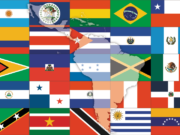The number of accidents involving scheduled commercial flights increased in 2010 to 121, up from 113 in 2009, the International Civil Aviation Organization (ICAO) says in a report analyzing global aviation safety performance.1
ICAO’s State of Global Aviation Safety is expected to become an annual report on global progress toward improved safety. The report is available on ICAO’s website at icao.int/safety/Documents/ICAO_State-of-Global-Safety_web_FINAL.pdf.
“While safety information is readily available from a number of sources, this innovative report presents a compelling and holistic plan for ICAO and the industry to consistently improve aviation safety, our number one priority,” said ICAO Secretary General Raymond Benjamin.
ICAO data showed a 4.5 percent increase in scheduled traffic from 2009 to 2010, with a record 30.5 million departures. That number is expected to climb to more than 52 million by 2030.
The worldwide accident rate in 2010 was 4.0 per million departures, marginally above the 3.9 per million recorded in 2009, ICAO said.
Fatalities in 2010 totaled 707, compared with 670 in 2009. The 2010 figure was the highest since 2006, when 806 people were killed in this type of airplane crashes.
The report assessed accident rates separately for each of the United Nations’ six regions of the world and found the lowest accident rate — 3.1 per million departures — in the Asian region. Nevertheless, nine of Asia’s 24 accidents, 38 percent, were fatal — the highest percentage of any of the regions.
Both Europe and North America had 3.3 accidents per million departures. No fatal accidents were recorded in North America in 2010, but there were 35 non-fatal crashes. Twenty-four accidents, including two fatal accidents, were recorded in Europe.
Latin America and the Caribbean, which has about 10 percent of the world’s total scheduled commercial traffic and 13 percent of the accidents, recorded an accident rate of 5.4 per million departures — above the world average — with 31 percent of those accidents resulting in fatalities.
The highest of the regional accident rates — 16.8 per million departures — was in Africa, where there were 17 crashes in 2010, three of them fatal.
“While Africa has the highest regional accident rate, it also accounts for the lowest percentage of global traffic volume — 3 percent of scheduled commercial traffic,” the report said. African accidents accounted for 14 percent of the worldwide total.
“Considerable variance” in flight volume from one region to another must be considered before conclusions are drawn from accident information, the report said, noting that the three regions with the most traffic — North America with 35 percent, Asia with 25 percent and Europe with 24 percent — each had a smaller share of the global accident total — North America with 29 percent, and Asia and Europe, each with 20 percent.
Oceania accounted for 3 percent of worldwide air traffic and 4 percent of accidents, the report said.
‘Consistent Goal’
The report emphasized the importance of cooperation as a “consistent goal and recognized strength of the aviation community. To keep pace with expansion and progress sector-wide, ICAO remains focused on the implementation and development of new safety initiatives.”
The report highlighted safety improvements involving member states, aircraft manufacturers and safety organizations, and outlined a series of “assistance success stories” that it said demonstrated the “cooperative spirit of ICAO’s member states.”
As examples, the report cited the cooperative effort by the Airport Authority of India and ICAO to conduct training programs in airport management and airport security for personnel from Mauritius, Nigeria, Philippines, South Africa, Tajikistan, Thailand and Uganda, as well as ongoing assistance from the French Civil Aviation Authority to aid Cambodia in the development of regulations for the certification of airports and to train Cambodian airport inspectors.
The report also singled out Flight Safety Foundation’s recent update of its Approach and Landing Accident Reduction Tool Kit, a multimedia resource on compact disc to be used by safety professionals and training organizations to prevent approach and landing accidents, including those involving controlled flight into terrain.
The Tool Kit updates, as well as a Foundation study on runway excursions, were distributed to ICAO member states.
Safety Audits
The document noted the role of ICAO’s Universal Safety Oversight Audit Programme (USOAP) in promoting “the systematic implementation of ICAO standards and recommended practices.” USOAP had, by the end of 2010, completed audits of 93 percent of ICAO member states; operators in those states account for 99 percent of air traffic worldwide.
Thirteen member states — five in Africa, four in Asia, two in Oceania and one each in the European region and the Latin America and Caribbean region — had not been audited, the report said.
“Effective state oversight capabilities, as measured by the USOAP, provide a proactive indicator of safety performance,” the report said. “The rate of effective implementation was shown to correlate with accident rates.”
In 2011, ICAO began transitioning USOAP to a continuous monitoring approach (CMA), which the report said “represents a long-term, flexible, cost-effective and sustainable method of identifying safety deficiencies, assessing associated risks, developing assistance strategies and prioritizing improvements.
“The CMA aims to provide a continuous report of a state’s effective implementation, as opposed to the snapshot audit conducted once every six years under the comprehensive systems approach.”
Note
- The report’s data involved scheduled commercial aircraft with a maximum takeoff weight of more than 2,250 kg (4,960 lb).

